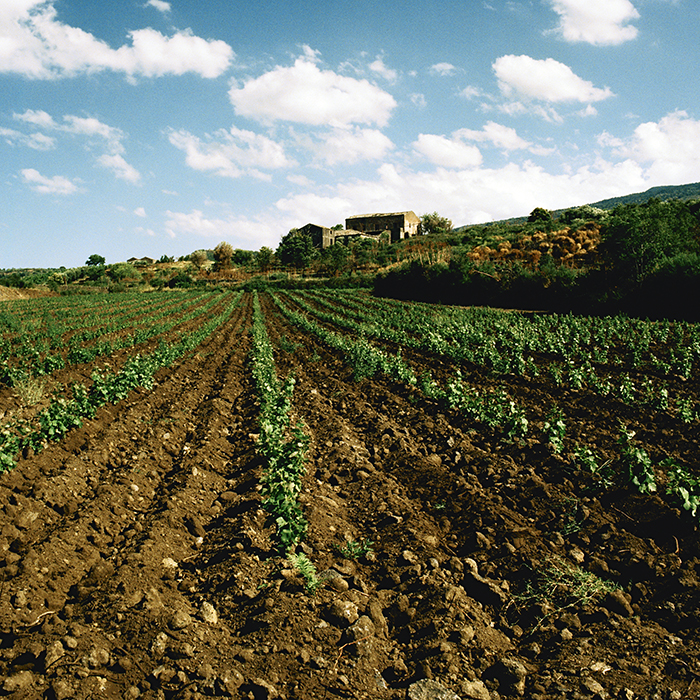Pass notes: the most important Italian grapes (part one)
Author: Chris Pollington

Photograph: Jason Lowe
Wine has been made in what is now Italy for at least three millennia, with invaders from all directions bringing their own varieties with them – from the Greeks to the Carthaginians to the Spanish and, most recently, the French (at the time of the Napoleonic invasion) – hence why Italy has such a varied viticultural palette. It would be impossible to cover all of Italy’s indigenous grapes, but here are the most important varieties (starting with the black grapes).
Aglianico: the major variety of the south-west, particularly Campania (Taurasi) and Basilicata. Dark and spicy, with high acidity and tannin, it is quite deep in colour and rich in aromas and flavours with notes of black fruit, spice and liquorice. It particularly likes a long growing season in the cool mountains of the south, with harvest not taking place until as late as November.
Barbera: originally Piedmontese, but now planted throughout the country, Barbera is used extensively for blending as well as a varietal in its own right. Deep in colour with plummy red fruit flavours and high acidity, it makes a great food wine and is therefore very popular with Italians as their everyday wine with meals.
Corvina: along with sub-variety Corvinone, have their home in the hills just north of Verona where they are responsible for the wines of Valpolicella. Rich in red fruit flavours, particularly cherries, the variety also has tough skins, making it ideal for the drying process necessary for Amarone, where the acidity, fruit, tannin and alcohol are all intensified.
Montepulciano: the central east coast’s major variety, Montepulciano is made into Rosso Conero (in the Marche) and Montepulciano d’Abruzzo (in – funnily enough – Abruzzo). Rich with plummy fruit and dark in colour, it ages very well and makes a great food wine, as well as being very good to drink on its own. One of Italy’s most versatile varieties, it blends well and takes on oak effortlessly.
Nebbiolo: the variety solely responsible for the greatest wines of Piedmont, Barolo and Barbaresco. Pale in colour, but rich and complex in both aromatics and flavouring phenols, it conjures up notes of roses, tar, mint, tea, coffee, chocolate, grilled meat, summer fruits and any amount of exotic spices. The variety likes a long growing season in order to ripen fully and tends towards high acidity, tannin and alcohol to balance the rich fruit. Not used extensively outside of Piedmont, Nebbiolo likes its home territory, but can be found in other northern Italian regions and in the New World.
Negroamaro: another great grape variety of the south, this time Puglia in the south-east. Its name suggests it’s dark and bitter, but bitterness is really a description of its great structure with crisp acidity and grippy tannins which serve to balance out the dark, berry-fruited, spicy character of the wines.
Nero d’Avola: Sicily’s most famous variety, with flavours of plums and black fruit, firm structure and great length at its best, it is another candidate for one of Italy’s greatest varieties. Planted throughout the island and used both as a varietal and as a blender, as in Sicily’s only DOCG red, Cerasuolo di Vittoria.
Sangiovese: the variety responsible for many of the great wines of Tuscany including Chianti (where it is usually blended), Brunello di Montalcino (in purezza), Vino Nobile di Montepulciano (usually blended, and nothing to do with the eponymous grape) and Morellino di Scansano, amongst others. Like Nebbiolo, Sangiovese has a complex cornucopia of aromas and flavours in its repertoire with black and red cherries, redcurrants, summer fruit, raw and grilled meats, blueberries and black tea.
Read Chris’s post covering Italy’s essential white grapes. In the meantime, you can browse our annual offer of the finest wines from the length and breadth of Italy’s boot on bbr.com.



I have just returned from a business trip to Verona where I enjoyed a number of food friendly wines especially Valpolicella and Amarone. There was also an extensive range of other wines and I find this a very useful summary of the main grapes which has improved my understanding of the diverse wines of Italy